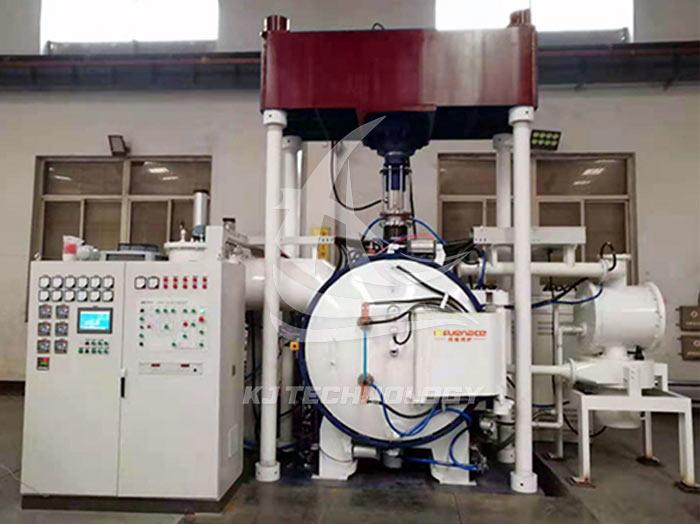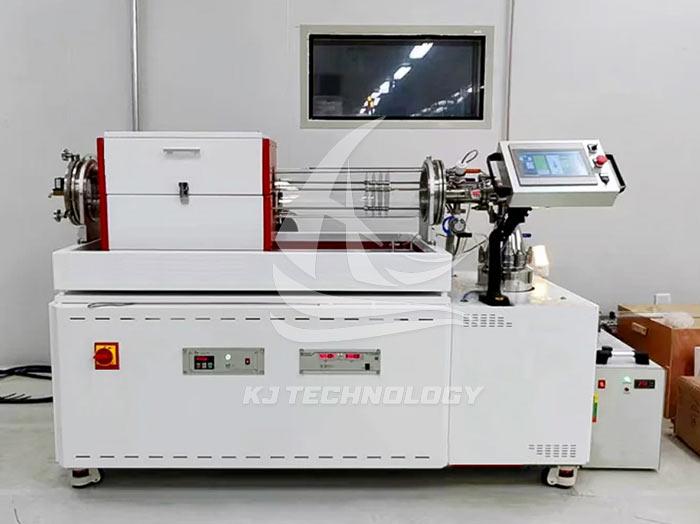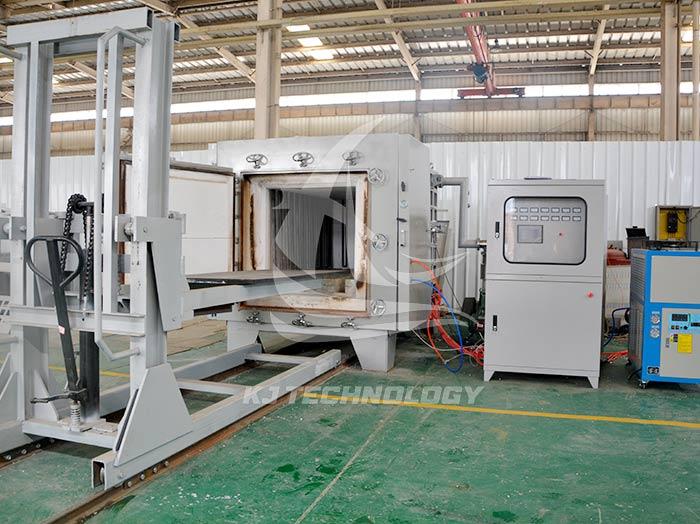The vacuum furnace for heat treatment cannot be evacuated
 09-11-2025 Author: KJ technology
09-11-2025 Author: KJ technology
The inability to vacuum up the heat treatment vacuum furnace may be caused by leakage, decreased pump pumping speed, contamination of the furnace body or workpiece, heating element or control system failure, etc. The following are specific reasons and solutions:
1. Leakage issue
Aging or damage of seals: Seals such as O-rings and sealing film may age or be damaged due to long-term use, leading to vacuum leakage.
Solution: Check and replace aging or broken seals to ensure good sealing.
Loose pipeline connection: The pipeline connection may become loose due to vibration or temperature changes, leading to vacuum leakage.
Solution: Check the pipeline connections to ensure that all connections are securely fastened without looseness.
Electromagnetic valves, pipe joints, vacuum pump suction valves, and sealing gaskets around the working chamber may leak due to manufacturing defects or long-term use.
Solution: Check these components and repair or replace them.
Internal leakage: Internal leakage often occurs on equipment with water cooling points, which may be caused by wet points in the water supply pipeline.
Solution: First clean the cavity, then supply cooling water and carefully inspect the water supply pipeline for any wet spots. Wet spots are the leakage points, and repair them accordingly.
2. Pump pumping speed decreases
Vacuum pump malfunction: The vacuum pump may experience a decrease in pumping speed due to factors such as pump oil contamination, insufficient or insufficient oil, poor operation, or damage.
Solution: Clean the vacuum pump, replace with new vacuum pump oil, replace with a new pump, strengthen the cooling of the pump, check if the power supply is normal, repair or replace damaged vacuum pump parts.
Pump overheating: Long term operation causes the pump to overheat, and the expansion of the components leads to a small gap, affecting the pumping speed.
Solution: Check the working condition of the vacuum pump to ensure normal power supply and strengthen the cooling of the pump.
Poor sealing of the front stage pipeline: Poor sealing of the front stage pipeline may cause a decrease in the pumping speed of the vacuum pump.
Solution: Check the sealing condition of the front-end pipeline and repair it.
3. Furnace or workpiece contamination
Gas release from furnace body or workpiece: The furnace body or workpiece may release gas due to improper material selection or poor cleaning, affecting the vacuum degree.
Solution: Choose appropriate materials to ensure that the furnace body and workpiece are clean and free of pollution.
Oil return valve blockage: Oil return valve blockage may cause a decrease in vacuum pump pumping speed.
Solution: Remove the return valve and clean it.
4. Heating element or control system malfunction
Heating element damage: The heating element may affect the vacuum degree due to aging, damage, or poor contact.
Solution: Check the connection and resistance of the heating element, repair or replace the damaged heating element.
Control system malfunction: Damage or improper setting of temperature controller, broken or short circuited thermocouple wires, temperature control instrument malfunction, etc. may cause abnormal vacuum degree.
Solution: Check and adjust the settings of the thermostat, replace or reconnect the thermocouple, and repair the control system.








